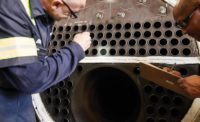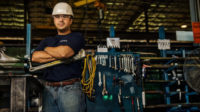In the complex world of building infrastructure, boilers are fundamental, serving as the cornerstone of heating systems. Much like maintaining personal health, ensuring a building’s boiler is in optimal condition is essential, particularly during the winter. However, changes in supply chain dynamics have introduced significant challenges in acquiring boiler parts, leading to prolonged lead times and consequent operational hurdles. As a result, the boiler maintenance industry is swiftly adapting to navigate these supply chain difficulties.
The good news is that there is hope. Facilities that adopt proactive maintenance strategies and harness the power of technological innovation are better equipped to handle these complexities. As the industry progresses, there will likely be a growing emphasis on sustainable and efficient boiler systems, signaling a transformative approach to how buildings address their heating requirements. This shift emphasizes proactive, technology-driven maintenance methods to maintain the longevity and operational efficiency of these essential systems.
This article delves into the current state of boiler maintenance, explores the effects of these extended lead times on parts, and investigates forward-thinking solutions to these ongoing challenges.
The vital role of boilers in building infrastructure
Boilers are more than mere heating elements; they are vital for sustaining a building’s overall health. Their critical role in delivering heat and maintaining proper circulation demands consistent and meticulous attention. With diligent maintenance, a boiler can operate efficiently for many years. However, the demands placed on these systems during the colder months underscore the necessity of routine check-ups and maintenance outside of the winter season. Individuals tasked with boiler maintenance must possess thorough training and a comprehensive understanding of the boiler’s functionality. Neglect or improper handling can result in considerable, and often sudden, financial consequences.
Supply chain disruptions and lead time increases
Recent global occurrences have profoundly affected the boiler industry — most notably, the COVID-19 pandemic, persisting energy crises, and inflation. These circumstances have resulted in scarcities of essential boiler components, including semiconductors, fans, and pumps, extending the lead times for certain suppliers to as much as a year, as reported by Yahoo Finance. The unstable nature of supply chains hampers the ability of service providers to guarantee specific supply volumes, consequently limiting the variety and availability of boiler models. Furthermore, escalating expenses in shipping, labor, energy, and materials have put further financial strain on already complex sourcing challenges.
Strategies for enhanced boiler maintenance and operational efficiency
To effectively tackle maintenance challenges, integrating advanced technology is crucial. Software as a service (SaaS), a model where applications are hosted by a third-party provider and accessed via the internet, offers diverse applications, ranging from business management to productivity tools. Similarly, computerized maintenance management systems (CMMS) provide comprehensive solutions, employing advanced software for tracking and proactively analyzing facility maintenance processes. This intelligent software can aid in pinpointing boilers requiring routine maintenance, identifying those with a high likelihood of future issues, and assisting in strategically planning the proactive replacement of outdated equipment. By enhancing preventive maintenance and enabling the proactive ordering of essential spare parts, both SaaS and CMMS play pivotal roles in optimizing maintenance strategies.
Internet of Things (IoT)
Technology plays a crucial role in reducing unexpected downtimes and mitigating the effects of breakdowns in boiler systems. As highlighted by Facility Executive, IoT enables the gathering of actionable data from various devices, sensors, and systems, significantly enhancing building maintenance. This technology facilitates continuous monitoring and data collection, offering a comprehensive view of real-time operations and aiding in predictive maintenance to preemptively address potential issues. Utilizing automation can also streamline operations and significantly reduce the time required to diagnose issues, increasing equipment uptime and process operation.

One great strategy for successful facility maintenance teams is preparedness. Proactive building operators develop emergency response strategies, backup plans, and build a network of vendors that can quickly source replacement parts and equipment to manage their boiler systems. As lead times for parts and equipment have increased, an additional step of preparedness is to focus on predicting and preventing equipment breakdown. This transition addresses immediate operational challenges and aims to reduce long-term maintenance costs by up to 40%, in addition to reducing other expenses incurred during a failure (i.e., rental costs, product scrap, and lost revenue). Therefore, it’s essential to adopt proactive and technology-driven maintenance strategies to manage boilers efficiently and ensure their longevity.
The current landscape of boiler maintenance
In navigating the current landscape of boiler maintenance, it’s evident a multifaceted approach is necessary to address the current challenges posed by supply chain disruptions and increased lead times for boiler parts. The integration of CMMS technology and IoT devices represents a pivotal shift in maintenance strategies. These technologies not only offer immediate benefits in terms of predictive maintenance and operational efficiency but also pave the way for a more resilient and sustainable approach to managing building infrastructure.
As we have explored, boilers are indispensable in maintaining the health of a building and its occupants. The care and attention given to maintenance significantly impacts their efficiency and longevity. In the face of challenges, like part shortages and logistical complexities, the adoption of proactive measures, such as increased preventive maintenance, strategic ordering, stocking of critical spares, and emergency response planning, becomes crucial. These steps ensure facilities are prepared for immediate challenges and positioned to efficiently manage future uncertainties.
The journey toward effective boiler maintenance in today’s dynamic environment is one of adaptability and foresight. By embracing technological advancements and proactive maintenance strategies, facilities can navigate the complexities of the present while building a more efficient, sustainable, and resilient infrastructure for the future. This evolution in boiler maintenance is not just about overcoming current hurdles; it’s about setting a new standard for how we manage and maintain essential building systems in an ever-changing world.




